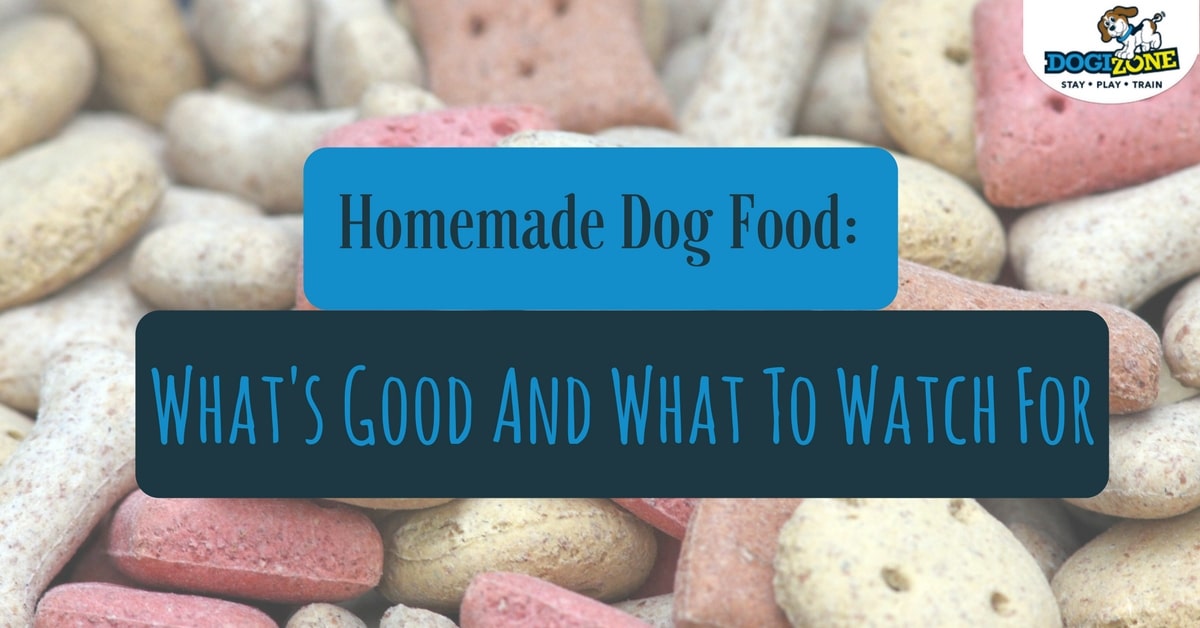Homemade Dog Food: What’s Good And What To Watch For
Tips on Making Your Own Homemade Dog Food
Making your own homemade dog food can be a great way to monitor your dog’s diet. So I have some great homemade dog food tips for you.
One of the easiest ways to monitor your dog’s diet and make sure that he or she is eating only healthy, nutritious food is to make your own homemade dog food. This is not as hard as it seems and, with a bit of practice, you will quickly be able to mix up a batch of all your dog’s favorite flavors.
There is a difference between homemade dog food and the BARF or Bone and Raw Foods diet that many dog owners, breeders and vets may recommend. Homemade dog food is not raw food, rather it is a cooked food that can resemble more of a thick stew or it can be prepared as a dry kibble.
To get started, here are some important tips to take the project as well as some potential downfalls or mistakes to avoid.
Tip: Find a quality recipe
It may be tempting to start trying out recipes you find online, but these are often developed by breeders or dog owners without a specific understanding of dog nutrition. Just like people, dogs need macronutrients, which are protein, fat and carbohydrates, as well as the micronutrients and additional nutritional elements such as essential fatty acids, calcium, vitamins and minerals.
Look for recipes developed by recognized animal nutritionists. You can also take your dog to an animal nutritionist for an assessment and the development of a specialized diet. This is often the best choice if your dog has sensitivities to some types of food or if he or she has a chronic type of health condition.
Avoid: Unknown Recipe Origins
As even slight imbalances in the percentages of the macronutrients or micronutrients can impact a dog, particularly a growing puppy or a dog with any other type of health condition, avoid recipes that are online and of unknown origin.
Even some breeders that have developed their own recipes may not be balanced food. When in doubt, have the recipe checked by an expert before it becomes your dog’s staple food.
Tip: Don’t Modify
This is a common mistake when making homemade dog food, with modifying the ingredients possibly changing the composition of the nutritional profile. For example, doubling the protein and skipping on some of the veggies is going to create a recipe that is no longer balanced in nutrition.
This is also true with grains if they are added to the recipe. Don’t swamp white rice for brown or rice for rolled oats, keep everything exactly as written.
Avoid: Getting Creative with Spices
Unlike people, dogs don’t need their food spiced or flavored with more than the meat, vegetables, fruits, grains and fat that is going into the recipe. Too many spices can actually cause digestive problems, and it may be off-putting to dogs.
Always make sure to avoid adding any type of foods to the recipe that are potentially toxic and dangerous to a dog. This includes onions and garlic. Additionally, make sure to cook the meat to kill any bacteria and to also cook the grains and starchy vegetables so they are bioavailable to the dog’s digestive system.
It will be important to carefully store the food as well. Dry kibble types should be stored in a sealed container and for no more than a week. Moist foods can be frozen and stored, or they should be used within two to three days and kept in the fridge.

